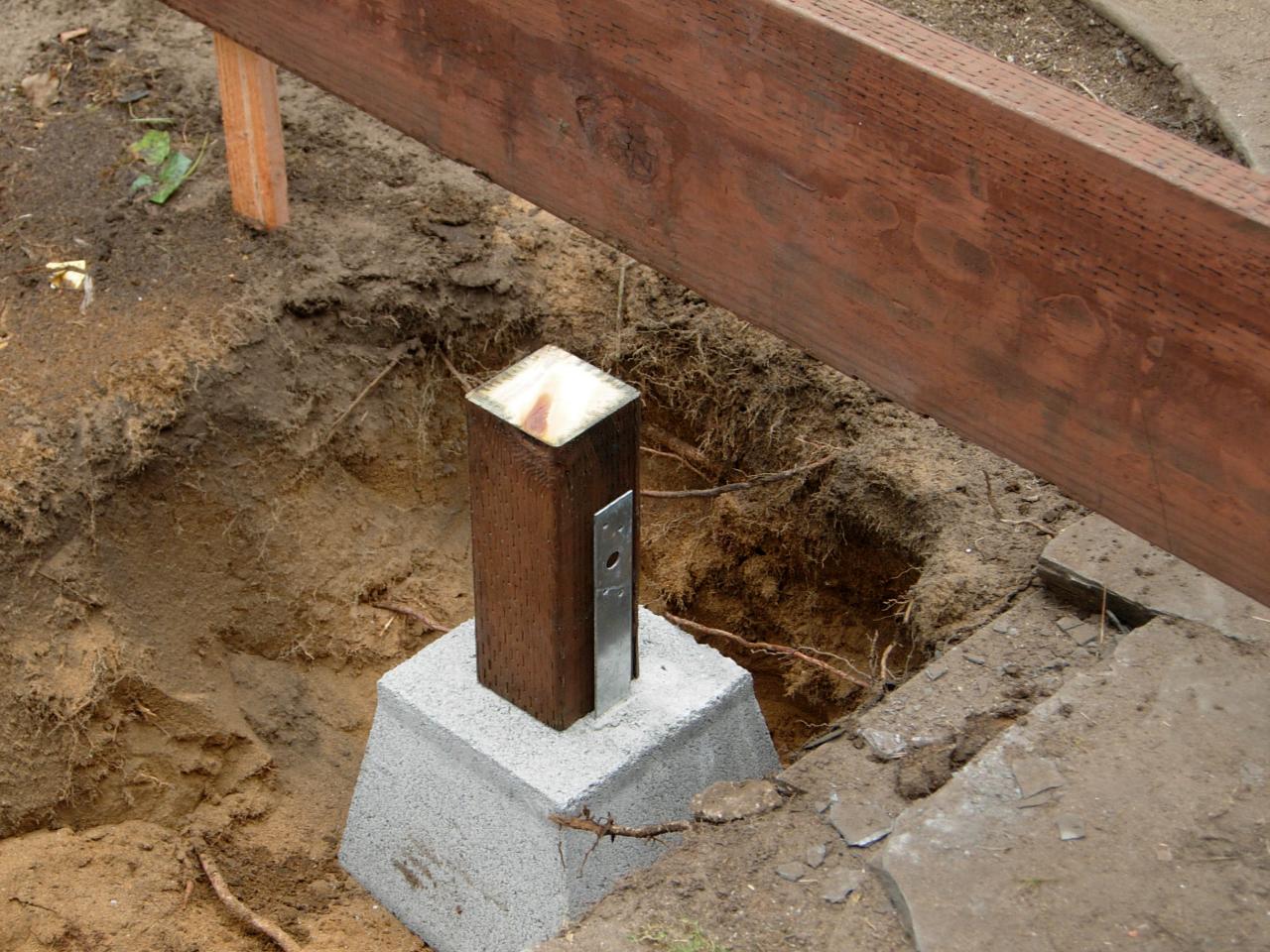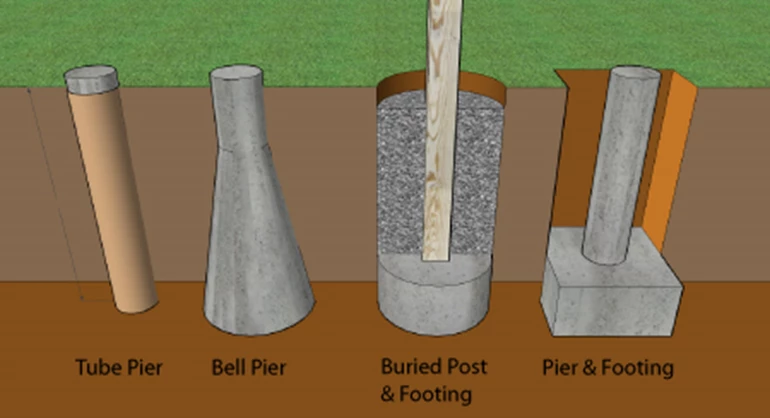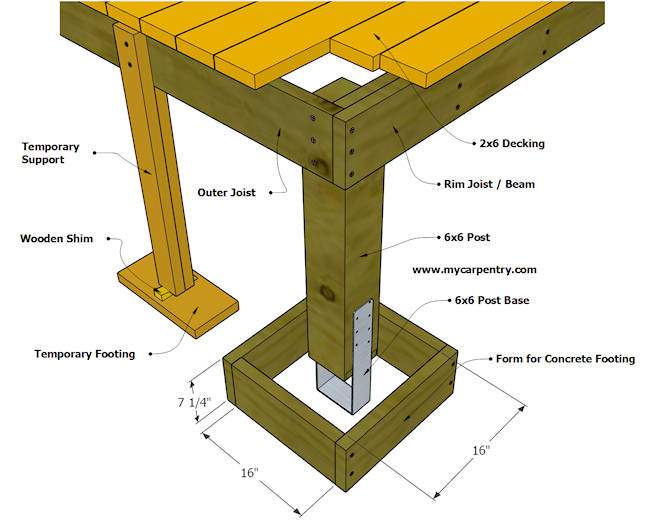Guarantee Stability and Long Life With Properly Set Up Deck Footings
Deck grounds may not be the most attractive facet of deck building, yet they play a vital role in ensuring stability and long life. In this discussion, we will discover the significance of appropriate deck grounds, elements to think about throughout installment, various types of footings readily available, step-by-step installation guide, and maintenance tips for making sure resilient footings.

Importance of Correct Deck Grounds
Why are appropriately set up deck grounds vital for the stability and durability of your deck? Deck grounds are the foundation on which the deck rests, moving the load from the deck to the ground.
First of all, properly set up deck footings distribute the weight of the deck equally, stopping any type of uneven settling or sinking. This is especially crucial in locations with unpredictable dirt, as it helps to reduce the risk of the deck moving or falling down. Furthermore, well-installed grounds make sure that the deck stays degree, preventing any kind of structural damage that can happen when a deck comes to be uneven.
Second of all, properly mounted footings provide a strong support for the deck, avoiding excessive activity and sway. This aids to keep the architectural integrity of the deck, decreasing the danger of injuries or accidents. It additionally lessens the damage on the deck, allowing it to hold up against the components and normal use for a longer period of time.
Factors to Think About for Deck Footing Setup
When mounting deck footings, there are numerous vital aspects to think about for proper installation. These elements can considerably impact the stability and durability of your deck. You require to establish the kind of dirt on which the deck will be developed. Various dirt types have different load-bearing capabilities, so it is important to perform a dirt examination to ensure the footings can support the weight of the deck and its occupants. Additionally, the location and format of the deck need to be very carefully planned to prevent any type of obstacles such as trees, energy lines, or underground pipelines. It is additionally important to take into consideration the regional climate and weather, as these can influence the durability of the footings. As an example, regions with a high water table may call for extra procedures to protect against water damages. The size and product of the grounds should be chosen based on the size and weight of the deck, as well as the local structure codes and regulations. By taking into account these variables, you can make certain the proper installation of deck footings and appreciate a secure and durable deck.
Sorts Of Deck Footings to Select From
There are numerous different kinds of deck footings readily available for you to select from. Each type has its very own benefits and negative aspects, so it's vital to consider your certain demands and the problems of your deck before choosing.
One usual kind of deck footing is the concrete footing. This includes excavating holes in the ground and pouring concrete into them to develop a solid foundation. Concrete footings are sturdy and give outstanding stability, making them suitable for decks in locations with difficult soil problems or high wind lots.
Another choice is the helical pier ground, which is composed of a steel shaft with helical plates that are screwed right into the ground. These footings are quick to set up and can be utilized in different soil kinds, consisting of sandy or clay dirts. They are also flexible, permitting simple leveling of the deck.
Sonotube grounds are one more preferred option. These grounds are developed by positioning a cardboard tube my website in a hole and filling it with concrete. Sonotube grounds are relatively simple to install and offer sufficient security for smaller sized decks or in areas with much less demanding soil problems.

When choosing the type of deck footing, it's important to take into consideration elements such as soil conditions, deck dimension and weight, local building ordinance, and personal choices. By selecting the appropriate footing type, you can make certain the stability and long life of your deck.
Step-by-Step Guide for Installing Deck Footings

Figure out the location: Begin by noting the exact position of each footing utilizing stakes and string (Deck Footings). Consider any type of local building regulations or policies pertaining to obstacle distances
Dig the openings: Make use of a post opening digger or an auger to dig the holes for the footings. Usually, a deepness of at the very least 36 inches is suggested for stability.
Level the openings: Make certain that the bottoms of the holes are level (Deck Footings). This can be accomplished by using a degree or a straight board across the top of the openings
Add gravel: Location a layer of crushed rock at the bottom of each opening to improve water drainage and prevent the ground from penetrating the dirt over time.
Put the ground types: Insert the ground develops right into the holes, ensuring they are focused and level. Use stakes to secure them in place.
Mix and pour concrete: Follow the instructions on the concrete mix bag to prepare the concrete. Put the concrete into the ground kinds, filling them completely.
Smooth the surface area: Utilize a trowel to smooth the surface of the concrete and remove link any kind of air pockets. Enable the concrete to cure according to the maker's instructions.
Maintenance Tips for Long-lasting Deck Grounds
Proper upkeep is essential for making certain the long life and security of deck grounds. By frequently examining and keeping your deck grounds, you can protect against damage and possible security hazards.
Routine cleaning is additionally essential for preserving deck grounds. Plant life, debris, and dust can accumulate around the grounds, which can cause moisture accumulation and decay. Cleaning the check out this site grounds consistently, using a brush or a pressure washer, can help protect against these issues and extend the life-span of your deck.
Along with cleansing, it is necessary to keep the location around the grounds clear of any kind of obstructions. Avoid piling items against the footings or allowing plants to expand as well near them. These obstructions can catch dampness and create the footings to deteriorate in time.
Finally, routine resealing of the footings is recommended to secure them from dampness and other environmental elements. Applying a water resistant sealer can aid protect against water damages and extend the lifespan of the footings.
Conclusion
To conclude, correct installation of deck grounds is crucial for making certain stability and longevity of your deck. Elements such as soil type, lots capability, and regional building ordinance need to be taken into consideration when selecting the best type of deck footings. Complying with a detailed guide for setup and routine upkeep will certainly help to guarantee the grounds continue to be long lasting and lasting.
In this discussion, we will certainly check out the importance of correct deck footings, factors to consider during installation, various kinds of footings offered, detailed installment guide, and upkeep tips for making sure long-lasting footings. Deck grounds are the foundation on which the deck relaxes, transferring the lots from the deck to the ground.One typical type of deck footing is the concrete footing. Insert the ground types: Insert the footing forms right into the holes, guaranteeing they are centered and level.In conclusion, correct installation of deck footings is vital for making sure stability and longevity of your deck.